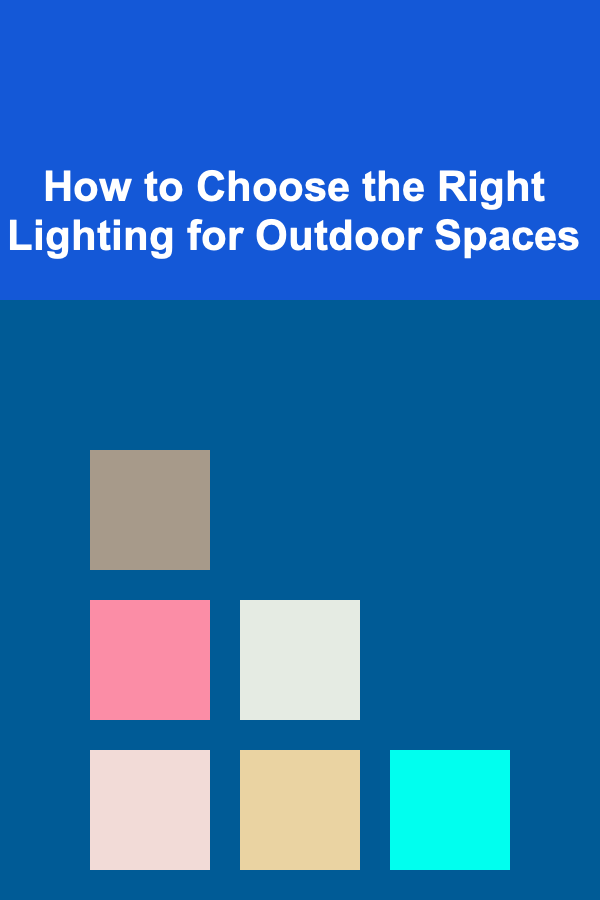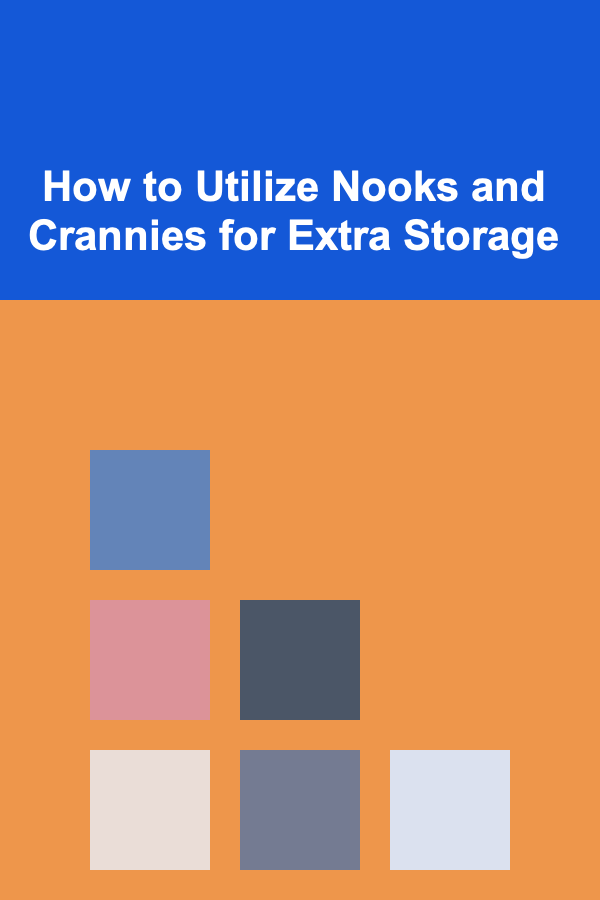
Designing for Rental Properties: A Comprehensive Guide
ebook include PDF & Audio bundle (Micro Guide)
$12.99$11.99
Limited Time Offer! Order within the next:

Designing a rental property is a different ballgame than designing a home for personal use. The focus shifts from individual preferences to maximizing appeal for a wide range of potential tenants while ensuring durability and cost-effectiveness. The ultimate goal is to create a space that attracts quality tenants, minimizes vacancies, and yields a strong return on investment. This guide delves into the key considerations for designing rental properties, covering everything from initial planning to final touches.
Understanding Your Target Tenant
Before you even start thinking about paint colors, it's crucial to define your target tenant. Who are you trying to attract? A student in a vibrant university town? A young professional looking for a stylish city apartment? A family seeking a spacious home in the suburbs? The answer to this question will heavily influence your design choices.
Consider factors like:
- Location: Proximity to universities suggests student housing. Proximity to business districts or entertainment centers points to young professionals. Schools and parks indicate families.
- Property Type: A small studio apartment is unlikely to attract a family, while a large house with a yard is probably not ideal for a single student.
- Price Point: The rental rate will dictate the level of finishes and amenities you can afford. Higher-end rentals can justify more luxurious features.
- Demographics: Research the demographics of the area. Age, income, and lifestyle will provide valuable insights.
Once you have a clear picture of your target tenant, you can tailor your design to their needs and preferences. For example, a student-focused rental might prioritize study space and durable, easy-to-clean surfaces, while a family-friendly rental might emphasize a spacious kitchen and a secure backyard.
Prioritizing Durability and Low Maintenance
Rental properties experience significantly more wear and tear than owner-occupied homes. Tenants may not always treat the property with the same care as an owner would. Therefore, durability and low maintenance are paramount. Investing in quality materials and finishes upfront can save you money and headaches in the long run.
Flooring
Flooring is one of the most critical areas to focus on. Consider these options:
- Luxury Vinyl Plank (LVP): LVP is an excellent choice for rental properties. It's waterproof, scratch-resistant, and relatively inexpensive. It also comes in a variety of styles that mimic wood or tile, offering a stylish look without the high cost and maintenance.
- Tile: Tile is another durable option, particularly for kitchens and bathrooms. Choose a neutral color and a textured finish to minimize slippage.
- Laminate: While less durable than LVP, laminate can be a budget-friendly option for bedrooms and living areas. Look for a high-quality laminate with a wear layer of at least 12mm.
- Carpet (Avoid if Possible): Carpet is generally not recommended for rental properties due to its susceptibility to stains and wear. If you must use carpet, opt for a low-pile, stain-resistant variety in a neutral color. Regular professional cleaning will be necessary.
Walls and Paint
Choose a durable, washable paint in a neutral color like off-white, light gray, or beige. These colors are versatile and appeal to a wide range of tenants. Semi-gloss or eggshell finishes are easier to clean than matte finishes. Consider using a scrubbable paint specifically designed for high-traffic areas.
Beyond paint, think about wall protection. Chair rails can prevent damage from furniture, and corner guards can protect vulnerable corners. Consider wainscoting in bathrooms for both style and durability.
Fixtures and Appliances
Opt for durable, mid-range fixtures and appliances. Stainless steel appliances are generally preferred by tenants and are relatively easy to clean. Choose faucets and showerheads with solid construction and a simple design. Avoid overly complicated or high-end appliances that are more prone to malfunction and expensive to repair.
When selecting appliances, consider energy efficiency. Energy Star appliances can lower utility bills, which can be a selling point for potential tenants. Include features like low-flow toilets and showerheads to conserve water.
Hardware
Choose durable, standardized hardware for doors, cabinets, and drawers. Simple, classic designs are less likely to go out of style and easier to replace if needed. Avoid trendy or overly ornate hardware that can be difficult to find replacements for.
Consider installing keyless entry systems for added convenience and security. These systems allow you to easily change access codes between tenants and track entry and exit times. Smart locks are also a desirable feature that can increase rentability.
Designing for Functionality and Livability
A well-designed rental property should be both functional and livable. Tenants should be able to easily use the space and feel comfortable living there.
Layout and Flow
Optimize the layout of the property to maximize space and flow. Open-concept living areas are generally preferred, as they create a sense of spaciousness and encourage social interaction. Ensure that there is ample storage space, including closets, cabinets, and shelving.
Consider the placement of furniture and appliances when designing the layout. Ensure that there is enough room to move around comfortably and that furniture can be easily arranged in different configurations.
Lighting
Adequate lighting is essential for creating a welcoming and functional space. Use a combination of natural and artificial lighting to brighten up the property. Install ample overhead lighting in living areas and bedrooms, and provide task lighting in kitchens and bathrooms.
Consider installing dimmer switches to allow tenants to adjust the lighting to their preferences. Energy-efficient LED lighting is a good choice for rental properties, as it consumes less energy and lasts longer than traditional incandescent bulbs.
Kitchen Design
The kitchen is often the focal point of a rental property. A well-designed kitchen can be a major selling point for potential tenants. Focus on creating a functional and efficient space that is easy to clean and maintain.
Choose durable countertops like laminate or quartz. These materials are resistant to scratches and stains and are relatively inexpensive. Install ample cabinet space to provide tenants with plenty of storage for their belongings.
Consider including a dishwasher in the kitchen. Dishwashers are a popular amenity and can make life easier for tenants. Choose a model with a high energy efficiency rating to save on utility bills.
Bathroom Design
Bathrooms should be clean, functional, and easy to maintain. Choose durable flooring and wall tiles that are resistant to water damage. Install a low-flow toilet and showerhead to conserve water.
Consider installing a vanity with ample storage space. A well-lit mirror and a sturdy shower curtain rod are also essential. Ensure that the bathroom is properly ventilated to prevent mold and mildew growth.
Creating a Sense of Style Without Over-Personalizing
While you want to create an appealing space, avoid personalizing the rental too much. Remember, it's not your home; it's a blank canvas for your tenants. Stick to neutral colors and classic styles that will appeal to a wide range of tastes.
Neutral Color Palette
As mentioned earlier, a neutral color palette is essential for rental properties. Light, neutral colors make the space feel larger and brighter and are easier to coordinate with tenants' furniture and belongings. Avoid bold or trendy colors that may not appeal to everyone.
Simple Decor
Keep the decor simple and minimal. Avoid cluttering the space with too many decorations. A few well-chosen pieces of art or a stylish rug can add personality to the property without being overwhelming.
Window Treatments
Provide simple, neutral window treatments that offer privacy and light control. Blinds or curtains in a neutral color are a good choice. Avoid overly ornate or fussy window treatments that may not appeal to all tenants.
Appliances
When upgrading appliances, think about what will benefit your rental income. A fridge that is well-sized for the target tenant, a microwave and a stove are typically necessary. Modern dishwashers and in-unit laundry facilities will generally boost the desirability of your rental and allow you to ask for more rent.
Budgeting for Rental Property Design
Setting a realistic budget is crucial for rental property design. Before you start any work, determine how much you can afford to spend on renovations and furnishings. Allocate your budget wisely, prioritizing durable materials and essential amenities.
Prioritize Essential Renovations
Focus on essential renovations that will have the biggest impact on the property's value and appeal. These may include updating the kitchen and bathrooms, replacing worn-out flooring, and painting the walls.
Shop Around for Deals
Shop around for deals on materials and appliances. Compare prices from different suppliers and look for sales and discounts. Consider buying materials in bulk to save money.
DIY When Possible
If you're handy, consider doing some of the work yourself to save on labor costs. Painting, installing flooring, and assembling furniture are all tasks that you can often do yourself with a little effort.
Don't Overspend
It's important not to overspend on rental property design. Remember that you're not designing a luxury home for yourself. Focus on creating a functional and appealing space that will attract quality tenants without breaking the bank.
The Importance of Curb Appeal
First impressions matter, especially when it comes to rental properties. The exterior of the property is the first thing potential tenants will see, so it's important to make a good impression. Invest in curb appeal to attract more interest and increase the property's value.
Landscaping
Keep the landscaping well-maintained. Mow the lawn regularly, trim bushes and trees, and plant flowers to add color. A clean and well-manicured lawn can make a big difference in the property's overall appearance.
Exterior Paint
A fresh coat of paint can do wonders for the exterior of a rental property. Choose a neutral color that is appropriate for the neighborhood. Repair any damaged siding or trim before painting.
Entryway
Make the entryway inviting and welcoming. Install a new front door, replace the hardware, and add a new doormat. A well-lit entryway can also enhance security.
Outdoor Amenities
Consider adding outdoor amenities that will appeal to tenants. A patio, deck, or garden can provide a relaxing outdoor space. A grill or fire pit can also be a nice addition.
Legal Considerations and Compliance
Before you start any renovations, be sure to check with your local authorities to ensure that you are in compliance with all applicable building codes and regulations. This is especially important when making structural changes or altering electrical or plumbing systems.
Fair Housing Laws
Be aware of fair housing laws that prohibit discrimination against tenants based on race, religion, national origin, familial status, disability, or other protected characteristics. Ensure that your design choices do not inadvertently discriminate against any potential tenants.
Accessibility
Consider making your rental property accessible to people with disabilities. This may involve installing ramps, widening doorways, and providing accessible bathrooms. Check with your local authorities to determine the accessibility requirements for rental properties.
Safety
Prioritize safety when designing your rental property. Install smoke detectors and carbon monoxide detectors, and ensure that all electrical and plumbing systems are up to code. Provide adequate lighting and security measures to protect tenants from harm.
Leveraging Technology
Technology can play a significant role in enhancing the rental experience and attracting tech-savvy tenants.
Smart Home Features
Consider incorporating smart home features, such as smart thermostats, smart lighting, and smart locks. These features can provide tenants with greater control over their environment and save them money on utility bills.
High-Speed Internet
Provide high-speed internet access to attract tenants who work from home or rely on the internet for entertainment. Offer a variety of internet plans to meet the needs of different tenants.
Online Rent Payment
Offer online rent payment options to make it easier for tenants to pay their rent. This can save you time and money and reduce the risk of late payments.
Virtual Tours
Create virtual tours of your rental property to allow potential tenants to view the property remotely. This can save you time and effort and make it easier to attract tenants from out of town.
Final Thoughts: A Continual Process
Designing a rental property is not a one-time task but an ongoing process. Regularly assess the property's condition and make necessary repairs and improvements. Solicit feedback from tenants to identify areas for improvement and ensure that the property continues to meet their needs. By investing in the design and maintenance of your rental property, you can attract quality tenants, minimize vacancies, and maximize your return on investment.
Remember to stay updated on current design trends and adapt your strategy to maintain a competitive edge in the rental market. Investing in quality materials, thoughtful design, and proactive maintenance will pay dividends in the long run, creating a desirable and profitable rental property.

How to Choose the Right Lighting for Outdoor Spaces
Read More
How to Create a Holiday Garden Display to Brighten Your Yard
Read More
How to Style Your Home with Low-Cost Textiles and Fabrics
Read More
How to Utilize Nooks and Crannies for Extra Storage
Read More
Developing Emotional Intelligence: A Comprehensive Guide
Read More
How to Plan Your YouTube Content Around Seasonal Trends
Read MoreOther Products

How to Choose the Right Lighting for Outdoor Spaces
Read More
How to Create a Holiday Garden Display to Brighten Your Yard
Read More
How to Style Your Home with Low-Cost Textiles and Fabrics
Read More
How to Utilize Nooks and Crannies for Extra Storage
Read More
Developing Emotional Intelligence: A Comprehensive Guide
Read More